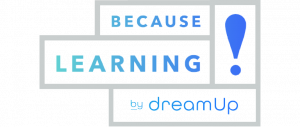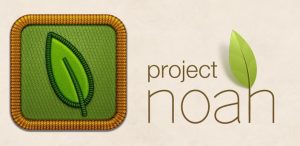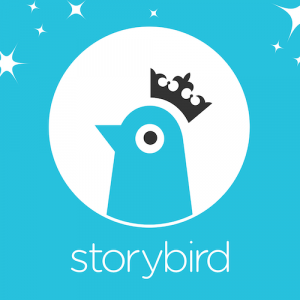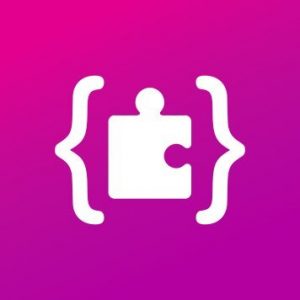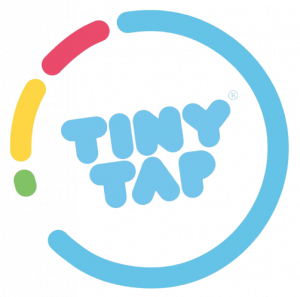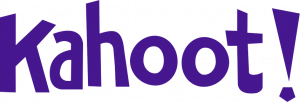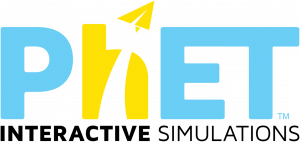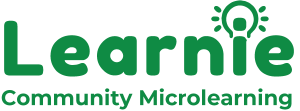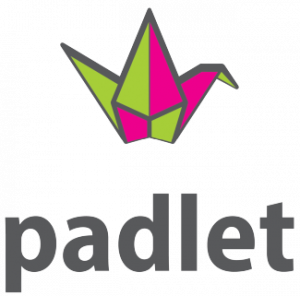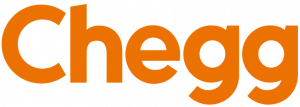
45 Next Generation Learning Tools That Kids Will Love
As technology has evolved over the last few decades, so has the education sector, both in the U.S. and around the world. Using technology in the classroom offers a wide range of benefits, such as supporting teachers and providing more resources to help build skills, whether it be reading, writing, or mathematics.
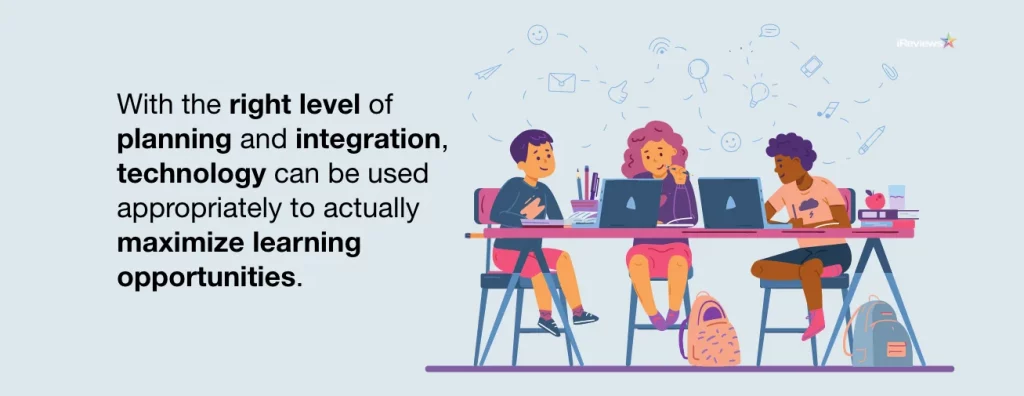
Let’s explore the most exciting educational learning tools for school teachers that have the power to make a noticeable difference in the classroom.
Best next generation tools and resources for school teachers
There’s a wide range of tools designed to support curriculum and help teachers and students achieve their goals. These are our top picks for school students of every age, due to their impressive functionality and simple integration into the classroom.
Elementary school resources
1. Codakid – Type: coding
Codakid is designed to be fun so kids don’t feel like coding is too complicated or confusing. Minecraft, Roblox, Javascript, and Python are a few of the game design options that teachers can use to engage and entertain young kids while showing them how to think creatively and build new projects.
2. Code with Google – Type: coding
Code with Google supports computer science lessons by teaching core concepts and challenging students to complete their own coding projects, guided by tutorials and lesson plans. There are step-by-step videos so even teachers with limited coding knowledge can benefit from this program.
3. Microduino – Type: coding
Build, play, and code is what Microduino is all about, offering small electronic blocks for creative assembly and problem-solving. While there’s a physical aspect to this program with the building blocks, there’s also open-source code that can be used with Scratch and other common coding programs for a top-notch educational tech tool.
4. Minecraft Education Edition – Type: coding
A lot of young kids love playing Minecraft, and the education edition transforms this popular game into a school-friendly activity. There are over 500 lessons, challenges, and curriculum options for teachers to use, keeping kids engaged and excited about critical thinking and creativity with an adventure sandbox-style game.
5. Because Learning – Type: science
It’s perfectly normal for some elementary teachers to worry about successful STEM lessons if they don’t have a strong background in programming. Because Learning aims to bridge the gap by helping teachers with STEM learning kits that meet national standards, so educators and students can learn and grow together.
6. Project Noah – Type: science
Project Noah Nature School is an online science platform where classrooms can upload photos of their wildlife sightings, whether it’s on school grounds or during a field trip to the park. This site is a global community of sorts that teaches elementary grade kids to respect and protect nature.
7. Generation Genius – Type: science and math
The great thing about Generation Genius is the engaging videos that break down key science and math lessons in a way kids can understand. There are lesson plans, vocabulary lists, paper and online quizzes, reading materials, and DIY activities, plus teacher guides to discussion questions and exit tickets.
8. Prodigy – Type: math
Prodigy is one of the most popular children’s math apps because it features highly engaging adventure games that let kids use their imagination and learn math at the same time. Educators can use this adaptive learning platform to extend classroom activities, arrange supplemental practice, and keep an eye on student comprehension of the key tasks at hand.
9. Storybird – Type: reading and writing
Elementary-age kids can write stories and work on creative writing with Storybird, whether it be picture books, poetry, comics, or novels. Teachers may assign each student an image to use as a writing prompt, or they can craft stories using what they learned in math or science and share their ideas with the rest of the class.
10. Sutori – Type: reading and writing
Another cool option for elementary teachers is Sutori, which is a multimedia platform where they can build an interactive timeline for storytelling. There are thousands of pre-made stories for teachers to incorporate into lesson plans, whether it be reading, writing, or history, as well as custom creations for study tools. Stories may be assigned as in-class assignments or homework too.
11. Google Expeditions – Type: history
Google Expeditions and Virtual Tours are an excellent resource for elementary teachers during history and social studies lessons. Students can check out landmarks across the country and around the world, helping them relate to important historical moments and current events in a different way than traditional textbooks.
12. Buncee – Type: art
Teachers can keep younger students engaged and focused with over 1,000 creative templates, including postcards, photo books, and mood boards on Buncee. Kids get badges as they finish projects and they can also work on art designs with their classmates. Buncee is available worldwide and has reputable educational options for English learners too.
13. SiLAS Solutions – Type: social skills
It’s important to teach kids the difference between right and wrong and how to work together as a team. That’s what SiLAS Solutions is designed to do, as this avatar-based software allows students to record their own voices for characters as they solve problems and share their emotions. This 3D video game is ideal for elementary school classrooms and learning programs.
14. Popplet – Type: general classroom
Popplet is great for brainstorming sessions as it has a variety of mind map templates and creation tools, including simple shapes that kids as young as kindergarten can make sense of. Many K-5 teachers also use Popplet for group projects and problem-solving, as the platform lets users save their progress and communicate in over 100 languages.
15. Flipgrid – Type: general classroom
Elementary school teachers can facilitate healthy classroom discussion even when class is over with Flipgrid. This platform offers simple free video discussions designed to get kids, even the shyer ones, to speak their minds and share fresh ideas. Students can present their thoughts on history, science, or other subjects in a pre-recorded video setting so no one feels ignored or distracted.
Middle school resources
1. Microsoft MakeCode – Type: coding
Microsoft MakeCode is popular with middle school teachers who aren’t super familiar with coding but want to make sure their students get the most out of their STEM lessons. This platform lets students build robots and circuits, plus design Minecraft and work on animated simulations.
3. National Science Foundation Multimedia Gallery – Type: science
This multimedia resource from a renowned organization allows middle school teachers to break down a wide range of science lessons, making it easy for children to absorb the key concepts. Videos cover everything from astronomy and space to nanoscience, chemistry, physics, and biology.
4. Celestia – Type: science
Trying to explain the complexities of space and the universe beyond us to sixth and seventh graders can be tough, but Celestia makes it easier with a real-time 3D visualization. It’s a free space simulation that engages students as they explore the universe, and teachers can easily use this program on Windows or Mac for a new take on traditional astronomy lessons.
5. Nearpod VR – Type: science
Middle school teachers may also want to use Nearpod VR for more engaging science lessons with 3D exploration. This technology offers virtual field trips with over 450 VR tutorials, which are categorized by grade level and subject. From solar eclipse to kinetic energy, there are lessons for all science classes, plus options for language arts, math, and social studies too.
6. SeeSaw – Type: math
SeeSaw is a reliable learning platform offering an easy way for students to draw and demonstrate their understanding of math concepts. Many teachers are choosing this platform to observe student proficiency in middle school math topics like whole numbers, fractions, linear equations, and inequalities.
7. TinyTap – Type: math
TinyTap has upwards of 100,000 learning activities for teacher and student use, with educational games for both elementary and middle school students. It’s especially good for kids in sixth, seventh, or eighth grade who could benefit from a fun, entertaining way to practice concepts like rational numbers and probability.
8. Glogster – Type: history
Glogster is a great option for history projects and other class presentations, as it’s an innovative multimedia management platform trusted by many teachers. Students can share their history posters and graphic designs with 3D elements, whether it be some of their favorite cartoon characters or detailed drawings. Glogster features more than 40,000 Glogs covering 80 different topics with millions of teacher and student accounts worldwide.
9. Tiki-Toki – Type: history
Helping middle schoolers make sense of history is made easier with Tiki-Toki, a timeline development tool with interactive multimedia and 3D design options. Students can complete classroom activities, history homework, and term reports with this professional timeline software.
10. Pear Deck – Type: geography
Pear Deck works well for geography and history lessons as teachers can make more interactive lessons, especially when some kids are in the classroom and others are learning remotely. Teachers can easily add audio and video to presentations, whether it be about states and countries or cultural similarities and differences around the world.
11. ZeeMaps – Type: geography
ZeeMaps is popular with geography teachers because it lets educators and students make graphic maps. Local, state, national, and international map templates are available, with colors and labels assigned as required. This online platform is great for mapping out country borders, war battles, and other complex concepts.
12. Fanschool – Type: writing
Formerly known as Kidblog, Fanschool is a safe online space for students to create, showcase, and connect. Teachers moderate the publications while students get to see their work published, whether it be a personal essay or historical research. Fanschool is seen as a fresh way to encourage creative writing and classroom collaboration.
13. Kahoot! – Type: general classroom
Kahoot! gets the whole class involved in a fun game, a welcome alternative to normal hand-raising. Teachers can easily incorporate this program in both the classroom or over video conferencing for distance learning, with options for pre-made content, group work, and assessments.
14. LiveBinders – Type: general classroom
Another tech tool for middle school teachers to use across different subjects is LiveBinders, which helps classrooms go paperless or at least cut down on paper consumption. Teachers and students can save articles, notes, and videos all in one place, which comes in particularly handy for math, science, and history lessons.
15. Bakpax – Type: general classroom
Whether teaching science or history, middle school teachers can save time and streamline grading with Bakpax. This is an AI tech tool that automatically grades student assignments, freeing up time to focus on creative activities and individualized instruction. This is a reliable tool for remote learning too, so it comes in handy for teachers navigating hybrid learning environments.
High school resources
1. Codecademy – Type: coding
Codecademy has both free and paid options for high schoolers and young professionals wanting to learn how to code. It’s used by many universities and workplaces, so getting high school students started early is a great choice for teachers who can benefit from community chapters and featured curriculum.
2. Tynker- Type: computer science
High school teachers can support their computer science curriculum with Tynker, a well-known educational site with nearly 4,000 coding lessons. Hour of Code is just one of the numerous STEM enrichment activities available on this platform, which suits both introductory coders and those with more advanced skills.
3. Labster – Type: science
High school teachers like Labster because it integrates with most learning management systems and offers automatic quiz grading and a dashboard of performance data to keep track of students. Labster has immersive 3D simulations that align with the curriculum and pair with real-world experiments.
4. Lifeliqe – Type: science
Lifeliqe is made for K-12, but it’s particularly useful for high school teachers thanks to the high-level 3D models that offer interactive learning to meet Common Core standards. There are over 700 lesson plans to choose from for visual learning covering chemistry, biology, physics, and life science.
5. PhET Sims – Type: science and math
The University of Colorado Boulder offers interactive simulations for earth science, physics, chemistry, biology, and math. There’s a great community of teachers on this web-based platform, which has video primers, specific tips for each simulation, and additional activities to assist with lesson planning and prep.
6. Mathway – Type: math
High school educators can help their students navigate calculus, precalculus, trigonometry, and algebra with Mathway. If they are stuck on a question, this free math problem solver explains it step-by-step. These detailed tutorials are great for in-class work time and practice sessions to make sure students are proficient in each lesson.
7. Socrative – Type: current events
Socrative is a free app for phones and tablets with interactive polls and assessments to help gather students’ thoughts on current events. It’s great for politics, social studies, and literature classes, as teachers can gauge student comprehension and ask for their input on important topics.
8. Learnie – Type: current events
Learnie community microlearning is a cool new app that helps teachers supplement their curriculum with short 30-second bursts of information on relevant topics. Current events classes and public speaking students can glean a lot of information from this free app, although there are valuable lessons available on every high school subject.
9. Edpuzzle – Type: social studies
When it comes to complex historical and cultural concepts, Edpuzzle makes a difference by allowing teachers to record valuable video information with reference points at any time. Educators can also share existing YouTube videos and post comprehension checks to make sure students are watching the required materials.
10. Anchor – Type: public speaking
A lot of high schoolers may find public speaking a bit daunting, but Anchor offers a fun way to practice presenting and demonstrating careful research and thoughtful opinions. Teachers can assign a topic or give students the choice of what they want to talk about on this free podcasting platform.
11. ArtWorkout – Type: art
Tech tools for high school teachers also extend to art with apps like ArtWorkout, a tool that guides students through key drawing concepts like perspective and composition. There are easy, medium, and hard assignments that encourage creativity and help students unlock their artistic tech skills.
12. Padlet – Type: general classroom
As a classroom collaboration tool, Padlet is great for high school teachers who want to provide students with educational materials to supplement their learning, all in one place. Padlet lets students interact with this content and create reports and portfolios, which works especially well for history, literature, and language classes.
13. Venngage – Type: general classroom
Visual learning with Venngage can benefit students of all ages, especially high schoolers who may otherwise be easily distracted. Teachers can use free infographic tools for lesson plans and give students access to visualize data and ideas for presentations and assignments. These infographics may be saved and shared online so future classes can make the most of them as well.
14. Headspace – Type: general classroom
High school is stressful at the best of times, and mental health resources and mindfulness exercises from Headspace can help students navigate school and personal challenges during these formative years. It’s free for teachers and has a wide range of exercises to help students stress less and stay focused on their goals.
15. StudyBlue – Type: general classroom
StudyBlue is a useful smartphone app for high school teachers and students who want to make smart cards for different subjects and share notes with their peers. This way, students can create study materials and use them on the go for all their courses, whether it be history, language arts, math, or science.
5 tips to ensure success when using technology in the classroom
1. Make instructions clear
Kids may act like technology whizzes, considering 75% of parents have children who use tablets, but they may not be as competent as you’d think. Provide clear instructions for all websites and apps so students are on a level playing field and know how to access their lessons.
2. Engage student tech support
Two-thirds of U.S. parents surveyed say parenting is harder now than it was 20 years ago, due in large part to technology and social media. Many teachers feel the same way, so it’s important to get kids engaged in helping with technology, rather than being distracted by it. Choose two or three hardworking students to serve as tech support, training them on tech tools ahead of time and giving them extra responsibility to support their classmates.
3. Encourage engagement
Educational tech programs should be a fun alternative to traditional paper worksheets and the same old lesson over and over. Use safe, engaging videos and blogs to open children’s eyes to the world around them and help them relate to the curriculum in a more well-rounded, real-world way, which is an approach approved by the International Bureau of Education.
4. Move around the room
Studies show classroom physical activity helps students stay concentrated and motivated, and technology can be used to break things up, too. Whether it’s moving kids around in stations for different tablet activities or having them all come to the front while you watch an educational video or play a game, it all helps with their educational experience. Teachers should also move around a lot when students are using tablets or laptops to make sure no one falls behind.
5. Monitor behavior
It’s important to keep a close eye on students whenever they use technology. Considering the rise of cyberbullying – something 37% of kids ages 12-17 experience – all students should be reminded of the rules when they use a classroom tablet or computer. Be proactive about professional and courteous internet use and how to treat classmates with respect both in-person and online.
Latest Reviews
- Top 26 Resources for Learning Sign Language
July 9, 2022
- The Alpha Tiny Home
June 23, 2022
Most Visited Reviews
- The Effie Ironing Machine
October 17, 2017
- ZERA Food Recycler
March 12, 2017
- Amabrush
July 10, 2017
- OpenDrive
July 26, 2016
- Muzo
November 10, 2016
Top User Reviews
Most Reviewed




